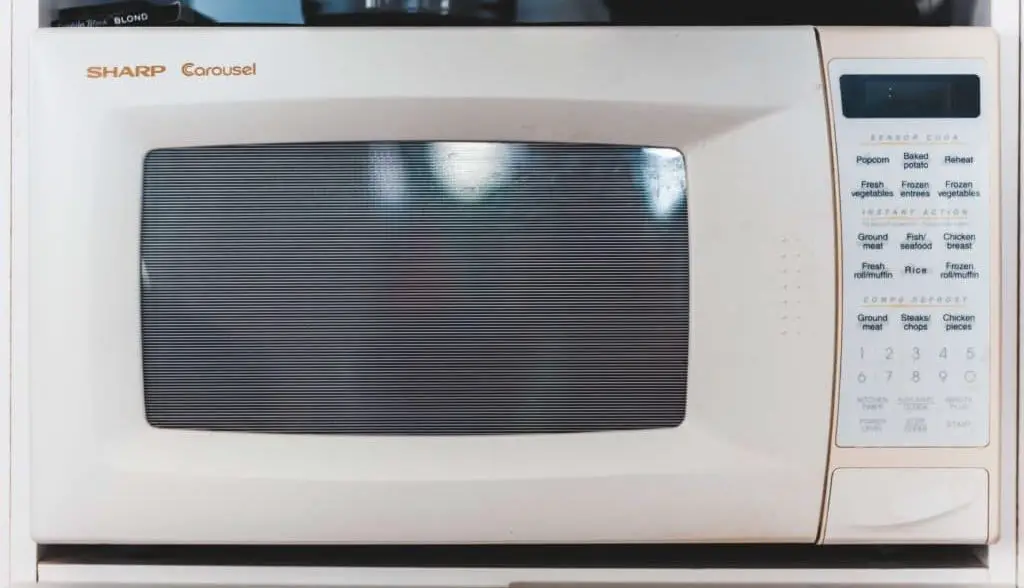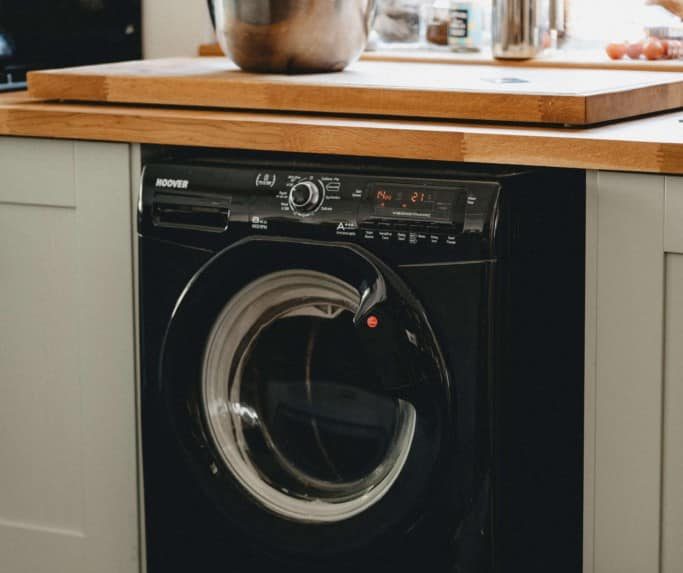
If you live in a small house or apartment it can sometimes be tough to find counter space for all your appliances. In order to maximize your space wisely, you may be wondering, can you put a microwave on a fridge?
You can put a microwave on top of a refrigerator. But, you need to make sure that the microwave fits safely, will have proper ventilation, and will not damage the top of your refrigerator.
That’s the overview, but there’s more to it. Next, we’ll cover the considerations in more detail. And we’ll also touch on whether you can put a microwave on a mini-fridge, in a cabinet, or on a washing machine. Let’s get to it!
Table of Contents
1. Can You Put a Microwave On a Fridge?

You can put a microwave on top of a refrigerator, but you need to make sure you do it safely and do not damage the refrigerator.
In order to do so, here are a few things you may want to consider:
1.1 Can You Reach to Safely Put In/Remove Food?
Most refrigerators are approximately 65-70 inches tall. Putting a microwave on top of your refrigerator may make it difficult for you to safely take hot food out without getting burned.
Also, if there are children in the home, they may need to stand on something, such as a chair, to reach the microwave. This could create additional safety risks.
1.2 Will the Microwave Fit on Top of the Refrigerator?
Make sure your microwave fits properly on top of your refrigerator. Some microwaves are rather large and may be larger than the top of the fridge. Make sure it sits securely and will not fall, slide, or tilt in any direction.
Another thing to consider is some kitchens have cabinets above the refrigerator that take up the space. This would make it impossible for a microwave to fit on top of the refrigerator.
1.3 Is the Microwave Too Heavy?
If you have a particularly heavy microwave, it could possibly dent the top of your refrigerator.
It is a good idea to check the manual for your refrigerator, if possible, to see if it says anything about placing objects on top or how much weight it can hold without damaging the appliance.
1.4 Will the Microwave Ventilate Properly?
Microwaves designed for countertop use are generally vented from the sides, or back.
If the refrigerator is in an open area, microwave ventilation should not be affected by placing it on top.
However, the heat generated from the microwave may cause the compressor from the refrigerator to kick in more than it would without the microwave on top, slightly affecting the performance of the refrigerator over a long period of time.
1.5 Can a Refrigerator and Microwave Be On the Same Circuit?
According to the National Electrical Code for 2020, it is recommended that each appliance have a dedicated circuit, not shared with any other appliance.
Microwaves can use anywhere from 500 to 1800 watts. A refrigerator compressor also draws a significant amount of electricity when it kicks on. Using the same outlet for both appliances could cause a circuit to trip.
2. Can You Put a Microwave On a Mini-Fridge?
You can generally put a microwave on top of a mini-fridge, but make sure that you do it safely. Similar to a standard-size refrigerator, you need to consider a few things like the height, weight, wattage, and ventilation of your specific microwave.
Consider the factors we mentioned in section 1 above before you decide to store your microwave on top of a mini-fridge.
3. Can You Put a Microwave Inside a Cabinet?
Operating a microwave inside a cabinet is generally not a good idea.
Microwaves that are designed to sit freely on a countertop have vents built into the back and/or sides. When they are placed or installed into a cabinet, the vents become blocked which can create a fire hazard.
However, storing a microwave inside a cabinet while it is not in use and taking it out of the cabinet for use, may be an option if you do not have a permanent place to store it.
4. Can You Put a Microwave on Top of a Washing Machine?

It is possible to put a microwave on top of a washing machine, assuming it is a front- loading washer. When doing so, make sure you place something under the microwave in order to compensate for the vibrations caused by the washing machine as it cycles.
Placing a board, towel, or rubber mat under the microwave will protect the washing machine from damage and will help keep the microwave or its metal rack from shifting or falling.
Also, keep in mind, it is important not to overload the circuit by using both appliances at the same time.
6. Related Questions
Do Microwaves Need Ventilation?
Microwaves that are designed to be put on the counter usually have vents built into the sides or back of the appliance to expel hot air while operating. If these vents are not covered, they provide ample ventilation.
A microwave designed to be mounted over a range usually is equipped with a ventilation system designed to eliminate smoke, moisture, or cooking odors that rise from the range top. It can lead to an outside vent or just recirculate the air in the room.
Is it Okay to Put Stuff on Top of a Fridge?
It is generally okay to put stuff on top of a fridge. However, there are also a few things to consider. Each time a refrigerator is opened or closed, it can cause items on top of it to shift. This could cause things to fall off of the refrigerator, causing damage or even injury.
In addition, placing things on top of the fridge may block some heat from escaping, causing the compressor to work harder. In the long run, this could increase your electric bill and decrease the life span of your fridge.
